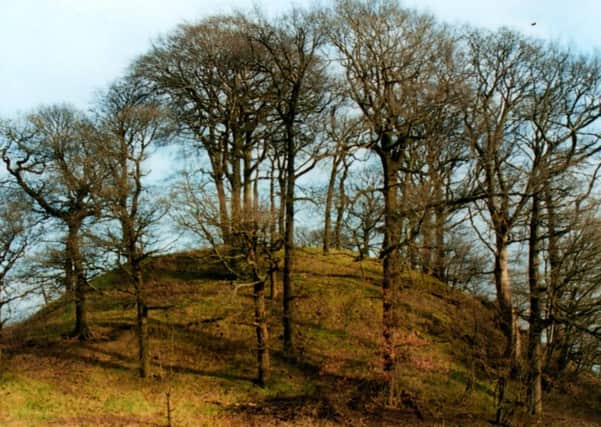The legends of Dunipace offer a good tale or two


Past deeds, real or imagined, bring a touch of colour to our shared heritage and that in turn makes living here all the more pleasurable.
All about us we can find reminders of those who have lived out their lives here and the discovery and retelling of their stories is a fascinating and enjoyable activity.
Advertisement
Hide AdAdvertisement
Hide AdTake the village of Dunipace for example. It has intrigued historians for centuries with legends galore which link the area to some of the great events and people of Scotland’s past.
The original settlement lay near the little mounds known as the ‘‘Hills of Dunipace’’, which people used to think were symbols of a peace treaty between the Romans and the locals.
We are told by some early writers that to symbolise the ending of hostilities, two or three mounds or hillocks were created and given a joint name using the languages of the two sides – ‘‘dun’’ from the native language, meaning hill coupled, with ‘‘pace’’ from Latin meaning, of course, peace. Thus, ‘‘the hills of peace”.
Very few would accept this elaborate concoction today. John Reid, who knows all there is to know about our place names, thinks the name might come from dun y bais meaning the ‘‘hill of the ford’’ – there was indeed an important fording point across the Carron not far away.
Advertisement
Hide AdAdvertisement
Hide AdOthers have argued that the ‘‘hills’’ were ancient burial sites, but no archaeological evidence has been found.
What we do know is that they are a natural feature dating back to the Ice Age, though the more prominent survivor may have been shaped to make it suitable for a ‘‘motte’’ or wooden castle in the late middle ages.
From the Dark Age period, say between 300 and 800AD, stories emerge of the valley of the Carron as the scene of many battles involving the tribal groups – Picts, Scots, Britons and Angles – who once vied for control of the heart of the country.
The river “ran red with the blood of the slaughtered” according to the few shadowy legends that survive.
Advertisement
Hide AdAdvertisement
Hide AdClose by, in the medieval period, stood a little chapel which tradition says had as its priest the uncle of William Wallace.
According to the poet Blind Harry, the priest taught young Wallace a verse in Latin which ended with ‘‘never live in slavery my son’’.
So there we are: Scotland’s greatest hero learned his most important lesson in Falkirk district!
In June, 1329, the body of King Robert the Bruce rested here overnight on its way to Cambuskenneth, then Dunfermline Abbey for burial.
Advertisement
Hide AdAdvertisement
Hide AdThere was a later church near the graveyard dating from the 1500s, and people writing in the mid-Victorian period remembered catching bats in their hankies during the long sermons!
In the 18th century, a house known as the Place of Dunipace stood near the “hills”, but only a fragment of a single turret survives, which was once used as a doocot.
The house was occupied by the Primrose family and in 1745 Sir Archibald Primrose was accused of supporting Bonnie Prince Charlie by showing the “rebels” the ford across the Carron on the morning of the battle of Falkirk Muir.
He claimed he had been forced to do it, but nobody believed him and off came his head!
Advertisement
Hide AdAdvertisement
Hide AdImpressionable folk still see him wandering around the old walled graveyard with his head tucked underneath his arm.
The graveyard is well worth a visit, but if you go at night keep a sharp look out for Archie!